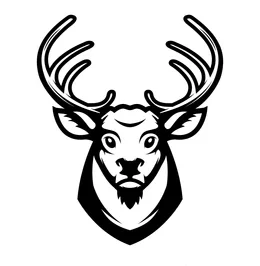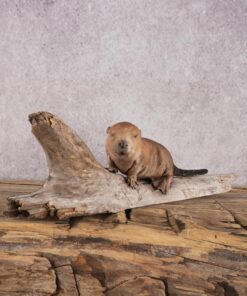Full Body Mounts
Full-body mounts in taxidermy involve preserving and displaying an entire animal in a lifelike pose. This process can be quite intricate and requires a deep understanding of anatomy, artistry, and preservation techniques. Here’s a broad overview of what goes into creating and maintaining full-body mounts:
1. Preparation and Planning
- Selection of Specimen: Choosing a high-quality specimen is crucial. It should be as free from damage as possible.
- Pose and Expression: Decide on the pose and expression you want. This might be influenced by the animal’s natural behavior, your personal preference, or the purpose of the mount (e.g., a hunting trophy, educational display).
2. Skinning and Preservation
- Skinning: The animal is carefully skinned, ensuring not to damage the hide. This process involves removing the skin from the body while preserving as much of the underlying muscle and fat as possible.
- Preservation: The skin is treated with preservatives to prevent decay. This might involve salting, pickling, or using commercial preservation solutions.
3. Creating the Form
- Form Construction: A foam or other material form is sculpted to replicate the animal’s natural shape and posture. This form acts as the structure around which the skin will be mounted.
- Customization: The form may be customized to match specific anatomical details, such as muscle definition and body contours.
4. Mounting the Skin
- Fitting the Skin: The preserved skin is carefully fitted onto the form. This involves meticulous work to ensure the skin is taut and aligned correctly.
- Detailing: Fine details, such as facial features, fur alignment, and natural color patterns, are attended to. This step is critical for achieving a realistic appearance.
5. Finishing Touches
- Eyes and Ears: Realistic eyes and ears are often crafted or purchased. They are mounted in place and adjusted for lifelike expression.
- Painting and Touch-Ups: The mount may be painted or touched up to enhance realism. This can include adding natural markings or adjusting the color of the fur.
6. Display and Maintenance
- Mounting: The finished mount is mounted on a base or in a display case. This could involve setting the mount in a specific environment or diorama.
- Care: Full-body mounts need regular maintenance to preserve their appearance. This includes dusting, checking for damage, and occasionally applying preservatives.
Considerations and Ethical Issues
- Legal and Ethical: Ensure that the specimen was obtained legally and ethically. This includes adhering to regulations regarding endangered species and obtaining appropriate permits.
- Sustainability: Some people choose to use taxidermy to make use of animals that have died from natural causes, but it’s important to consider the ecological impact and respect for wildlife.
Applications
- Educational Displays: Museums and educational institutions use full-body mounts to provide a realistic representation of animals.
- Personal Collections: Some individuals collect full-body mounts for personal enjoyment or as trophies.
Full-body taxidermy requires skill and precision, blending scientific knowledge with artistic talent to create lifelike representations of animals.
Sale!
Full Body Mounts
Original price was: $400.00.$325.00Current price is: $325.00.
Sale!
Full Body Mounts
Original price was: $5,250.00.$4,999.00Current price is: $4,999.00.
Sale!
Full Body Mounts
Original price was: $495.00.$375.00Current price is: $375.00.
Sale!
Full Body Mounts
Original price was: $1,249.00.$999.00Current price is: $999.00.
Sale!
Full Body Mounts
Original price was: $1,200.00.$1,159.00Current price is: $1,159.00.













